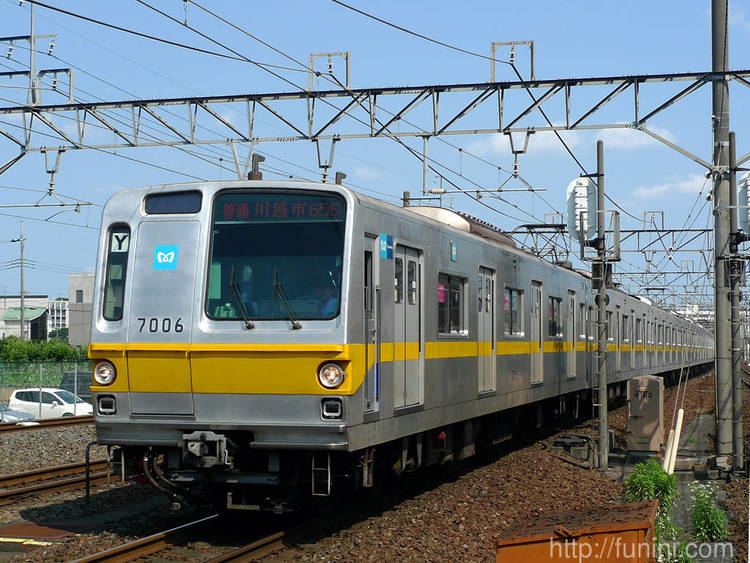Native name 東京地下鉄有楽町線 Daily ridership 927,104 (2010) Locale Tokyo | Opened October 30, 1974 Stations 24 | |
 | ||
Terminis Wakōshi Station, Shin-Kiba Station | ||
The Tokyo Metro Yurakucho Line (東京地下鉄有楽町線, Tōkyō Chikatetsu Yūrakuchō-sen) is a subway line in Japan owned and operated by the Tokyo subway operator Tokyo Metro. The line connects Wakōshi Station in Wakō, Saitama and Shin-Kiba Station in Kōtō, Tokyo. On maps, diagrams and signboards, the line is shown using the color "gold" ( ), and its stations are given numbers using the letter "Y".
Contents
- Services
- Rolling stock
- Tokyo Metro
- Other operators
- Former rolling stock
- Depots
- History
- Future developments
- References
The proper name as given in an annual report of the Ministry of Land, Infrastructure and Transport is Line No. 8 Yūrakuchō Line (8号線有楽町線, Hachi-gō-sen Yūrakuchō-sen). According to the Tokyo urban transportation plan, however, it is more complicated. The line number assigned to the section south from Kotake-Mukaihara to Shin-Kiba is Line 8, but that of north of Kotake-Mukaihara to Wakōshi is Line 13, which indicates the section is a portion of Fukutoshin Line which shares the same number.
Services
The Yurakucho Line has inter-running counterparts on its northern side, both of which are "major" Japanese private railway companies in Greater Tokyo. One is the Tōbu Railway at Wakōshi, north to Shinrinkōen. The other is the Seibu Railway at Kotake-Mukaihara with its bypass line Seibu Yūrakuchō Line connecting to its main Ikebukuro Line, through trains north to Kotesashi or Hannō.
According to the Tokyo Metropolitan Bureau of Transportation, as of June 2009 the Yurakucho Line is the fifth most crowded subway line in Tokyo, at its peak running at 173% capacity between Higashi-Ikebukuro and Gokokuji stations.
Semi-express (準急) services ran on the Yurakucho Line between June 14, 2008 and March 6, 2010, operating twice hourly between Wakōshi and Shin-Kiba. Between Wakōshi and Ikebukuro, semi-express trains stopped only at Kotake-Mukaihara; between Ikebukuro and Shin-Kiba, trains stopped at all stations. The semi-express trains ran between rush hours during weekdays and more frequently on weekends and holidays. These services were abolished and replaced with local services on March 6, 2010.
Since March 2008, very occasional Bay Resort limited express trains on the Odakyū Odawara Line operate to Shin-Kiba on the Yurakucho Line via a connecting track to the Chiyoda Line beyond Sakuradamon.
Since March 26, 2017, Seibu operates the S-Train limited-stop express service between Toyosu and Tokorozawa on the Seibu Ikebukuro Line on weekday mornings and evenings.
Rolling stock
All types are operated as 10-car sets.
Tokyo Metro
Other operators
Former rolling stock
Depots
History
From 10 September 2012, 10-car 5050-4000 series sets entered revenue service on the Yurakucho Line, with inter-running through to the Tobu Tojo Line.
Future developments
A branch line has been planned since the early 1980s from Toyosu Station, heading north via Kameari Station (on the Jōban Line) to Noda in northwest Chiba Prefecture.
